Difference between revisions of "Designing for the laser cutter"
From MakeICT Wiki
Jump to navigationJump to search (some laserweb updates) |
|||
| Line 1: | Line 1: | ||
== Resources == | == Resources == | ||
| − | The [[ | + | The [[Laserweb]] software is great for interfacing to the laser cutter but it has almost no design tools. Use a design program to create your design: |
* [http://inkscape.org Inkscape] is illustration software for creating or modifying vector images. It's like the 100% free and open source cousin of Adobe Illustrator. Inkscape can be used to create designs that can include both etches and cuts in a single file. | * [http://inkscape.org Inkscape] is illustration software for creating or modifying vector images. It's like the 100% free and open source cousin of Adobe Illustrator. Inkscape can be used to create designs that can include both etches and cuts in a single file. | ||
** [http://tavmjong.free.fr/INKSCAPE/MANUAL/html/index.php Inkscape Manual] | ** [http://tavmjong.free.fr/INKSCAPE/MANUAL/html/index.php Inkscape Manual] | ||
| Line 12: | Line 12: | ||
== Rasters == | == Rasters == | ||
| − | + | Laserweb can be used to etch raster images (jpg, png, bmp, etc) with some caveats: | |
| − | * | + | * Laserweb will accept a full-color image, but will process it as gray scale. Remember there are not colors in laser cutting, the laser only cuts in one color (burnt). |
| − | * | + | * Laserweb can scale the power of the laser according to the brightness or darkness of each pixel. As it scans your raster, it will attempt to modulate the power. There is some reaction time involved so the slower your scan, the better resolution you'll have across power levels. |
| − | + | * Dithering an image can yield good results | |
| − | |||
| − | * | ||
** Scale up your image | ** Scale up your image | ||
*** In GIMP, select Image > Scale... | *** In GIMP, select Image > Scale... | ||
| Line 26: | Line 24: | ||
*** Set "Color dithering" to your desired effect (probably something besides "None"). | *** Set "Color dithering" to your desired effect (probably something besides "None"). | ||
** You may find better control if you convert to grayscale first, tweak brightness/contrast/levels, and then dither. | ** You may find better control if you convert to grayscale first, tweak brightness/contrast/levels, and then dither. | ||
| − | |||
=== Dither examples === | === Dither examples === | ||
| Line 46: | Line 43: | ||
* Set the document page size to the size of your media. This makes it easier to visualize your design (''File > Document Properties'') | * Set the document page size to the size of your media. This makes it easier to visualize your design (''File > Document Properties'') | ||
* It's also recommended that mm is used as the default unit | * It's also recommended that mm is used as the default unit | ||
| − | |||
| − | |||
| − | |||
| − | |||
| − | |||
| − | |||
| − | |||
| − | |||
| − | |||
=== Tracing === | === Tracing === | ||
Revision as of 08:44, 14 January 2018
Contents
Resources
The Laserweb software is great for interfacing to the laser cutter but it has almost no design tools. Use a design program to create your design:
- Inkscape is illustration software for creating or modifying vector images. It's like the 100% free and open source cousin of Adobe Illustrator. Inkscape can be used to create designs that can include both etches and cuts in a single file.
- GNU Image Manipulation Program (GIMP) is photo-editing software for creating or modifying raster images (jpg, png, bmp, etc). It's like the 100% free and open source cousin of Adobe Photoshop. GIMP can be used to create etch designs only.
- 123d Make can generate slices from 3D models that can be assembled into 3D objects (N cost, but not open source and no Linux support)
Rasters
Laserweb can be used to etch raster images (jpg, png, bmp, etc) with some caveats:
- Laserweb will accept a full-color image, but will process it as gray scale. Remember there are not colors in laser cutting, the laser only cuts in one color (burnt).
- Laserweb can scale the power of the laser according to the brightness or darkness of each pixel. As it scans your raster, it will attempt to modulate the power. There is some reaction time involved so the slower your scan, the better resolution you'll have across power levels.
- Dithering an image can yield good results
- Scale up your image
- In GIMP, select Image > Scale...
- I'd recommend 300dpi. You'll need to know your desired physical size and do the math to figure out how many pixels that is
- And convert your image to a black-and-white dither
- In GIMP, select Image > Mode > Indexed...
- Select "Use black and white (1-bit) palette"
- Set "Color dithering" to your desired effect (probably something besides "None").
- You may find better control if you convert to grayscale first, tweak brightness/contrast/levels, and then dither.
- Scale up your image
Dither examples
| Size | No dither | Floyd-Steinberg (normal) | Floyd-Steinberg (Reduced) | Positioned | Original |
|---|---|---|---|---|---|
| Regular | 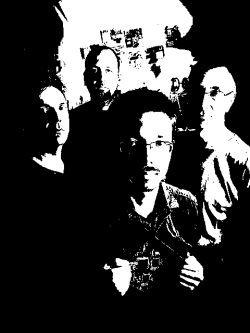 |
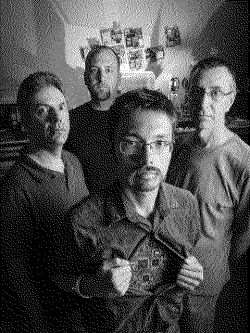 |
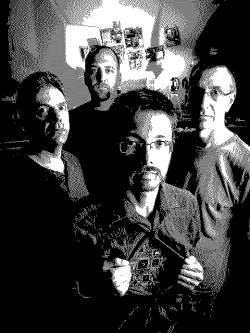 |
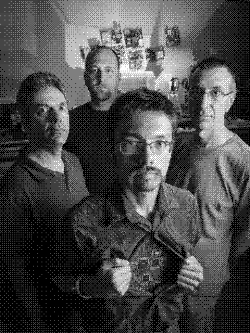
|
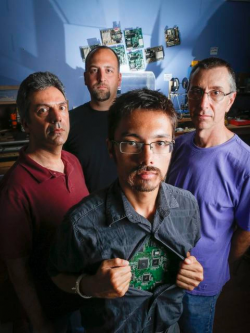
|
| 2x scaled | 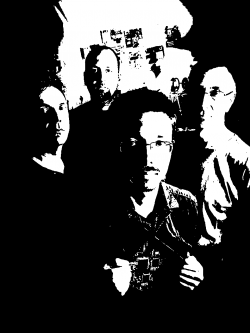 |
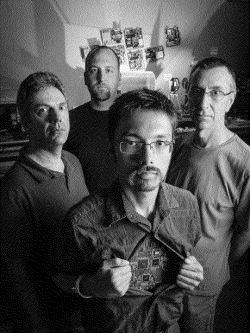 |
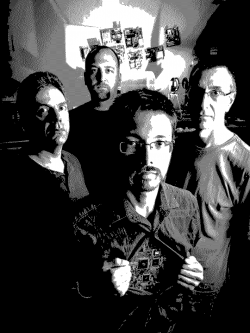 |
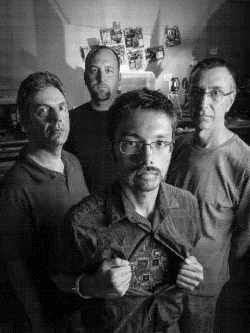
|
Vectors
Recommended Inkscape Settings
- Change the bounding box option from "Visual" to "Geometric". This will exclude the stroke width in the calculation of shape dimensions (which are also ignored in DXF, LaserCut, etc). To do this,
- Edit > Preferences
- Select "Geometric Bounding Box"
- Set the document page size to the size of your media. This makes it easier to visualize your design (File > Document Properties)
- It's also recommended that mm is used as the default unit
Tracing
Inkscape has some pretty sophisticated vectorization algorithms built-in. This means that you can feed it a raster-type image, and it can generate a vector trace from it. This can be used to generate cut paths from a raster image - if you brought the image directly into LaserCut instead, it would only allow you to engrave it.
It can also be useful for including an image with vector designs in a single file.
| Original | Traced |
|---|---|
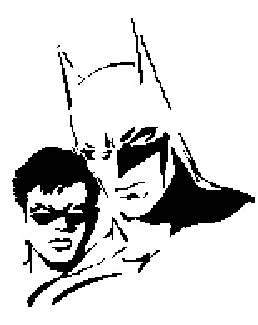 |
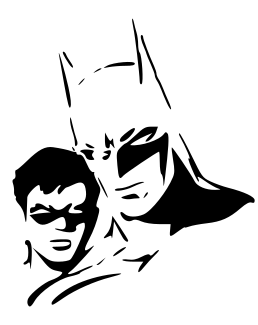
|
- For line work (black-and-whites, line-drawings, cut-outs, silhouettes, etc), you'll probably want to use "Brightness Cutoff"
- To preserve/separate colors, select "Colors" under "Multiple Scans"
- Be sure to uncheck "Stack scans", or your shapes will overlap (and be lasered multiple times!)
DXF export from Inkscape
Inkscape can generate DXF files, which can be imported into LaserCut.
- Always save your file as .SVG - this is the native file format for Inkscape and preserves data. Use the "Save a copy" feature to export alternative file types.
- Text and some other shapes must be converted to paths before they will appear in the DXF.
- To make sure everything is a path before you export:
- Edit > Select all in all layers
- Path > Object to path
- You will lose the ability to modify some properties of some objects, like changing a text's font or a rectangle's rounded corners
- Images cannot be converted to paths in this manner. To do so, see the "Tracing" section
- To make sure everything is a path before you export:
- To export the DXF,
- Select File > Save a copy...
- Set the file type to "Desktop Cutting Plotter (AutoCAD DXF R14) (*.dxf)"
- Uncheck ROBO-Master and LWPOLYLINE
- Set the Base unit to 'mm'
- Layer export works as expected
DXF import to LaserCut
- Make sure that Inkscape has finished saving the DXF before you attempt to import it. The status bar will give an indication when it is complete
- Occasionally, LaserCut will fail to import a DXF properly. If this happens, close the application and try again. Sometimes, you may need to try more than twice. Weird, I know.
- Make sure your drawing is positioned on the virtual bed in the workspace. It's actual position doesn't matter if you're in immediate mode (default), but the software does weird things if you're off the virtual table. The easiest way to do this is to select everything, and then Center to Table
- Paths will come in as segments. If you plan to do any engraving you must unite lines, but it's a good idea to do no matter what (Tools menu).
Useful extensions
- Render > Hershey Text for simple vector fonts (these laser much faster than filled our outlined fonts)
- Render > Gear... for generating paths in the shape of gears. Remember that tooth pitch must match for gears to mesh. Scaling a gear after it's rendered breaks this. Can also be done via Live Path Effect.
- Laser Tools > Tabbed Box Maker for generating boxes with interlocking tabs